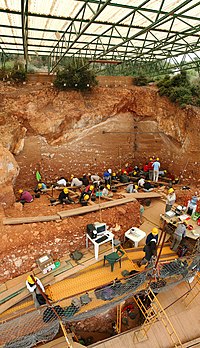
Photo from wikipedia
ABSTRACT Archaeologists have an obligation to conduct research that is relevant and responsive to the desires, interests, values, and concerns of Indigenous descendant communities. Current best practices for collaborative, community-based… Click to show full abstract
ABSTRACT Archaeologists have an obligation to conduct research that is relevant and responsive to the desires, interests, values, and concerns of Indigenous descendant communities. Current best practices for collaborative, community-based archaeologies emphasize long-term engagement and “full collaboration,” including the coproduction of knowledge and total stakeholder involvement. The present-day structures and demands of archaeology—especially in CRM and graduate student research contexts—can serve to make such fully collaborative work difficult, if not impossible. Oftentimes, these difficulties result in a complete abdication of collaboration or even consultation beyond the bare minimum required by law. However, professional archaeologists must strive in all instances to work alongside Native communities in respectful, responsive, and mutually beneficial ways even if this work may often fall short of the loftiest ideal. In this article, the authors present two case studies in collaboration from recent projects conducted in the North American midcontinent. These case studies clearly demonstrate how tribal fieldwork monitoring, working with tribal institutional review boards (IRBs), and other related forms of “imperfect” collaboration can still help move us toward a more ethical, inclusive, and respectful future archaeology.
Journal Title: Advances in Archaeological Practice
Year Published: 2023
Link to full text (if available)
Share on Social Media: Sign Up to like & get
recommendations!